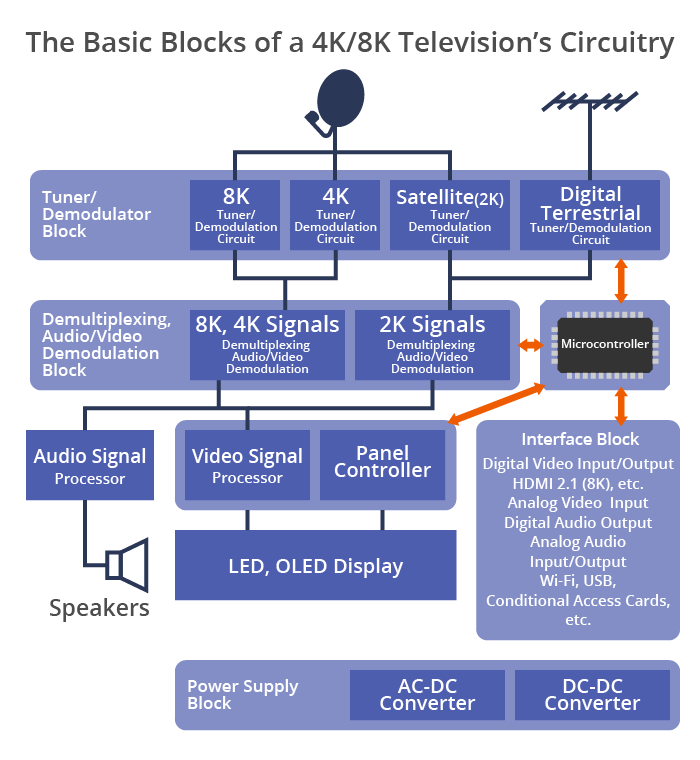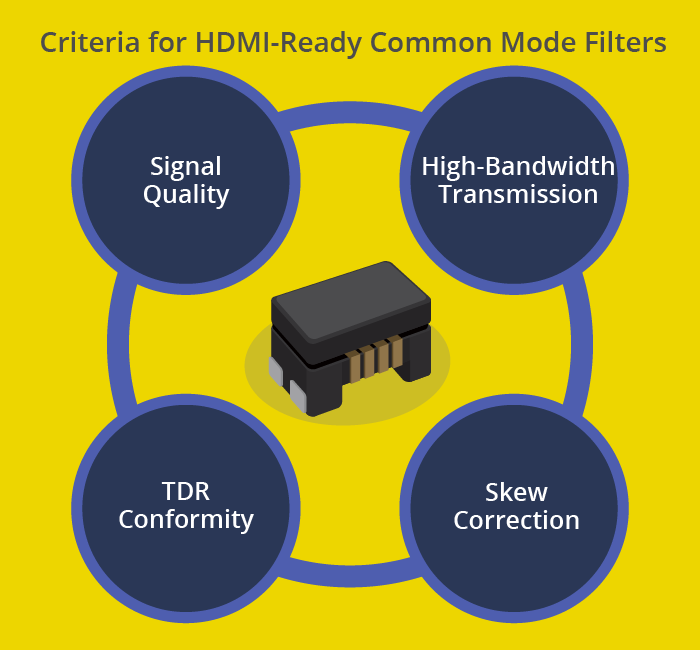Intro to EMC Topics
Practical Applications—Part 5: Noise Countermeasures for AI Speakers

Robots can be broadly classified into two categories: industrial and service. Industrial robots, such as assembly and welding robots, have been widely used in FA (factory automation) systems for a long time, but in recent years, service robots have seen major development. In particular, the development of interactive robots, such as AI speakers (smart speakers), is active worldwide as various models of household service robots are becoming available.
Interactive robots with built-in AI assistants
The interface of the AI speaker, an interactive robot, is voice. Without having to use a touch panel or keyboard, microphones pick up the human voice and send it to the cloud, where AI (artificial intelligence) recognizes it and provides various services—such as music playback, news and other information, Internet searches, shopping, and operation of home appliances. AI’s deep learning also allows the user to engage in simple chats.
For standing AI speakers, it is necessary to detect the user’s direction, even if the user is speaking from a distance, and distinguish the user’s voice from surrounding noise. For this purpose, AI speakers are equipped with multiple microphones to identify the direction of the user based on time lags and the strength of the arriving speech. AI speakers also utilize noise cancellation technology to omit any ambient noise coming from multiple directions. Amplifiers and speakers are just as crucial as microphones, as the demand for sound quality comparable to that of dedicated audio equipment increases along with the proliferation of AI speakers.
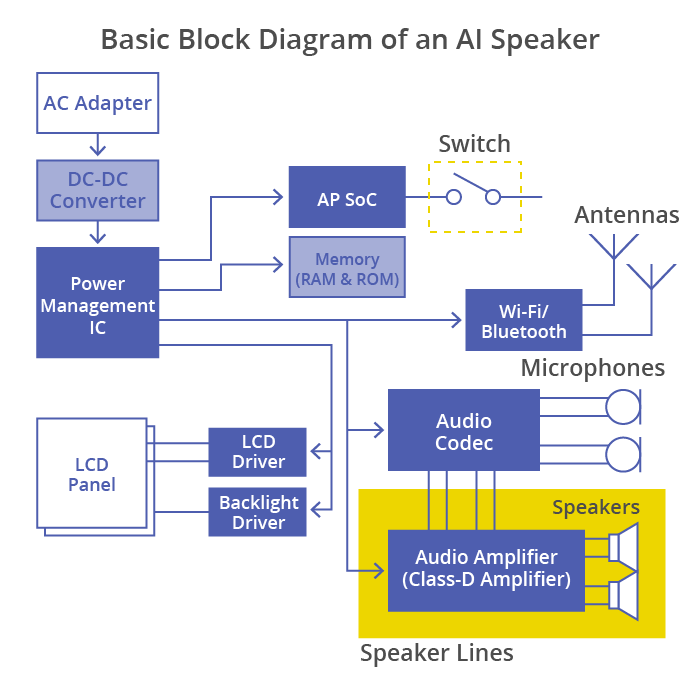
Challenges for class-D amplifiers used in AI speakers
The power amplifiers in AI speakers are digital amplifiers called class-D amplifiers, which are also used to drive speakers in smartphones, tablets, and laptops. Class-D amplifiers, also known as switching amplifiers, are based on the PWM (pulse width modulation) technique and uses switching elements to convert and amplify audio input signals into pulse signals, which are then converted back to analog signals for output by speakers.
Class-D amplifiers are smaller and consume less power than analog amplifiers used in high-end audio equipment. However, pulse signals contain many harmonic components, and if no countermeasures are taken, the wiring connecting the speaker can act as an antenna and generate electromagnetic noise.
In order to suppress electromagnetic noise radiating from speaker lines, chip beads are commonly placed at the output stage of a class-D amplifier as a noise filter. A chip bead is a chip component in which a coil is formed inside a ferrite element using multilayer techniques and other methods. The impedance of a chip bead is composed of the reactance properties of the coil and the resistance properties of ferrite. In the low-frequency range, the reactance component works to reflect and block noise, while in the high-frequency range, the resistance component of the ferrite works to absorb noise and convert it into heat. Chip beads are widely used in electronic equipment as a simple and highly effective EMC measure.
Ferrite plays a significant role in the properties of chip beads. Due to the relatively high current flow in speaker lines, ferrite with a high resistance component is used. However, as the output power increases, harmonic noise components cause the audio waveform to deform, resulting in audio distortion. With ordinary chip beads, it is difficult to achieve both suppression of radiated noise and high sound quality. In response, TDK has developed a new noise suppression filter leveraging its expertise in ferrite technology.
Noise suppression filters that improve the sound quality of AI speakers
The VAF series of noise suppression filters are ideal for audio lines such as those in AI speakers with an output power of 2W to 20W. The degree of audio distortion in a speaker line is generally expressed as THD+N (Total Harmonic Distortion + Noise), with a smaller value indicating better sound quality. As shown in the figure below, with chip beads, the THD+N value increases as the output increases, but with noise suppression filters, the characteristics are almost the same as without a filter. Noise filters also cause no distortion. Results indicate that the replacement of chip beads with noise suppression filters greatly affects sound quality.
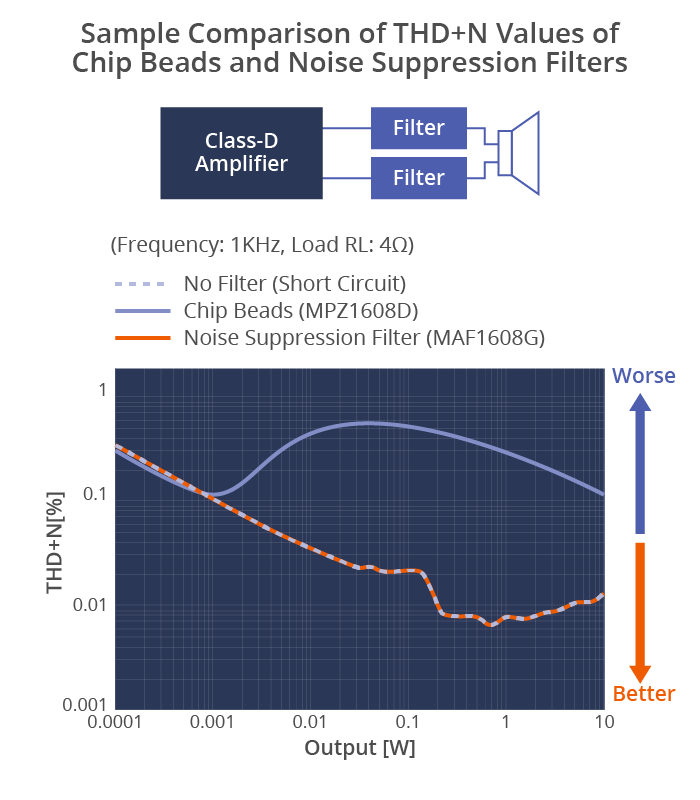
Effective solutions with LPFs (low-pass filters) and chip varistors
Generally, an LPF (low-pass filter) is inserted in the output stage of a class-D amplifier to extract the audio output signal. For smartphones and other devices with low output power, filterless systems that do not require LPFs are becoming mainstream, but for devices such as AI speakers, LPFs are necessary. The characteristics of the LPF also affect sound quality.
The combination of a noise suppression filter and an LPF (VLS-AF series) is effective in suppressing the radiated noise of AI speakers, but the effect is further enhanced by using a chip varistor (AVR series), as shown in the figure below. Chip varistors are widely utilized in electronic devices as elements to protect circuits from ESD (electrostatic discharge) from the human body. Because chip varistors function as capacitors (except when bypassing intruding ESD to ground), their use in speaker lines can significantly improve the suppression of radiated noise. A comparison graph shows chip varistors clear the CISPR Class B limit (the maximum value of radiated noise allowed in electronic equipment, such as home appliances) with ease.
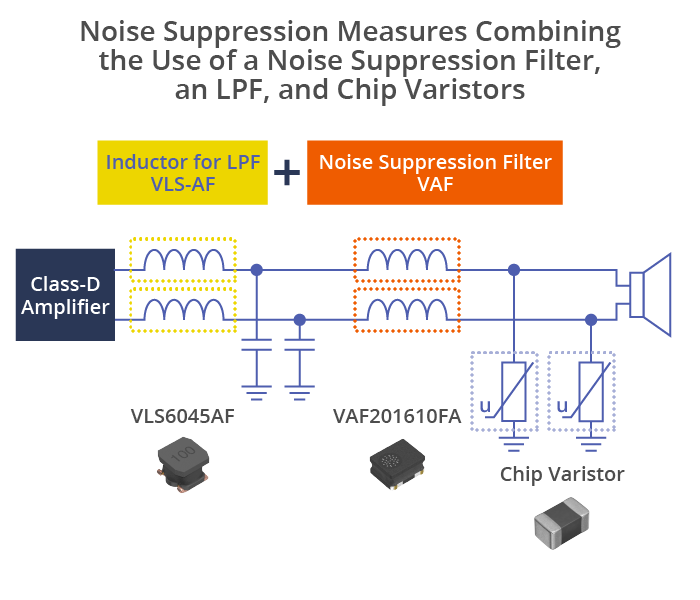
There is a growing demand for AI speakers to deliver high-quality sound as they evolve into partner robots. TDK’s noise suppression filters, LPFs and chip varistors provide optimum solutions for suppressing radiated noise in speaker lines and ensuring high sound quality. TDK offers a wide range of products that match the output levels of class-D amplifiers and other applications.
TDK is a comprehensive electronic components manufacturer leading the world in magnetic technology



